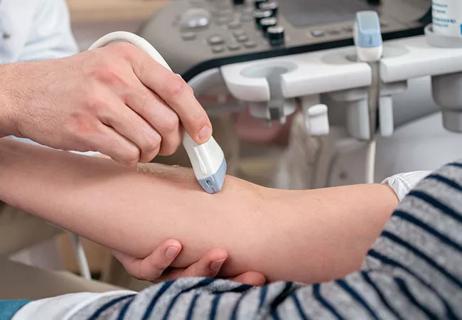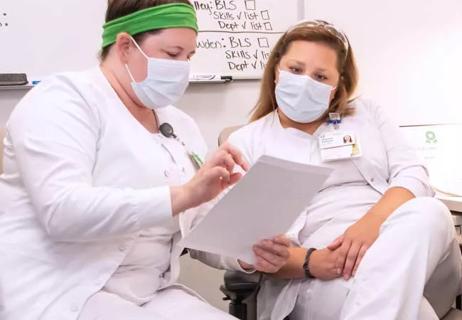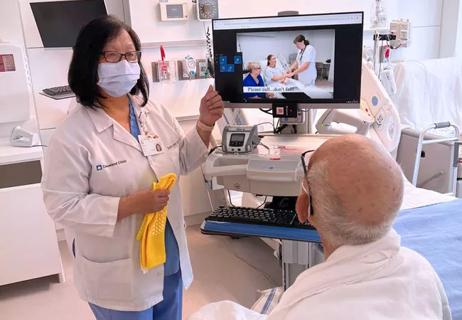Prior to building the recently opened Cleveland Clinic Avon Hospital, architect Randy Geise, EDAC, approached caregivers at the healthcare system wondering if there was a difference in patient outcomes based on hospital window views. “He speculated whether a view of the sky, buildings or nature (grass, trees, etc.) made a difference,” says Nancy M. Albert, PhD, CCNS, CHFN, CCRN, NE-BC, FAHA, FCCM, FAAN. “We had no idea.”
Cleveland Clinic is a non-profit academic medical center. Advertising on our site helps support our mission. We do not endorse non-Cleveland Clinic products or services. Policy
As ACNO of Nursing Research and Innovation at Cleveland Clinic, Dr. Albert decided to spearhead a research project to examine if window views were associated with psychological profile, perceptions of general health and clinical outcomes of medically and surgically treated cardiac patients.
Connections have been made between light exposure and physical and mental health. For instance, some people who are deprived of sunshine in the winter suffer from seasonal affective disorder. “In our study, we tried to include factors, such as anxiety and depression, associated with long-standing notions that people have about light, nature and health,” says Dr. Albert.
Albert and her peers considered five research questions:
The descriptive, three-cohort study took place on three medical-surgical cardiac telemetry units on Cleveland Clinic’s main campus over a five-month period during the summer and fall. Among the inclusion criteria, patients had to be awake and alert and in their rooms for a minimum of two days prior to being approached to participate. Patients were placed in private rooms by the admitting department.
Data were categorized by three types of window views when patients were lying down in bed:
The types of window views were nearly evenly distributed among the 463 participants.
Data collection entailed several components. Research nurses collected questionnaire data from patients who were exposed to various lighting conditions, from full sun to full clouds. Comorbidity data was collected from patients’ medical records, and administrative data was pulled from databases after patient enrollment. Measurement of the light exposure (or “lux”) was assessed for each patient room two times (a sunny and cloudy day), independently of patient data, between 11 a.m. and 1 p.m. when the sun is at its highest point in the sky.
The factors hypothesized to be associated with nature view were not significantly associated with any window view on univariate analyses, with one notable exception: Patients in nature or sky room views had higher perceptions of general health. In multivariable analyses, patient characteristics associated with window view were controlled. Although a nature or sky window view (compared to a building view) remained associated with receiving surgical treatment and fewer co-morbid medical conditions, perceptions of general health no longer differed by hospital room window view.
One limitation of the study was that unstudied factors could have biased window view, thereby minimizing outcomes. For example, the research team hypothesized that nurses may have purposely placed surgical patients who were at risk for delirium in rooms with nature or sky view to help restore day/night balance or general health. Dr. Albert stresses that more research is needed to determine outcomes based on window view as a natural phenomenon (placed in a room by chance) versus based on a nursing decision to gain new knowledge about hospital window views and hospital recovery.
“In this study, we had seven hospital care factors representing clinical outcomes, four patient characteristic factors and three psychological factors, yet none of them were associated with hospital window view,” says Dr. Albert. “When patients are medically ill or recovering from a surgical procedure, window view may not be an important factor of physical or emotional health and clinical outcomes. Based on our research findings, optimal medical and nursing care reflecting high-quality, evidence-based recommendations are what is important while in the hospital.”
Cleveland Clinic’s 13th annual Nursing Research Conference is May 3 – May 4. Register now!

Study shows ultrasound can be valuable tool for improving patient satisfaction by reducing failed IV insertions

New system uses vital signs to predict need for further intervention

Findings reveal personal and professional factors that influence nurses’ interest in medical research

Nurse scientists bridge divide between bench and bedside

Individual and population factors play a role

Study looks at cardiopulmonary arrest and activation rates

Video education and nurse-led reinforcement help with fall risk awareness

Further research into collaborations may help strengthen nursing science